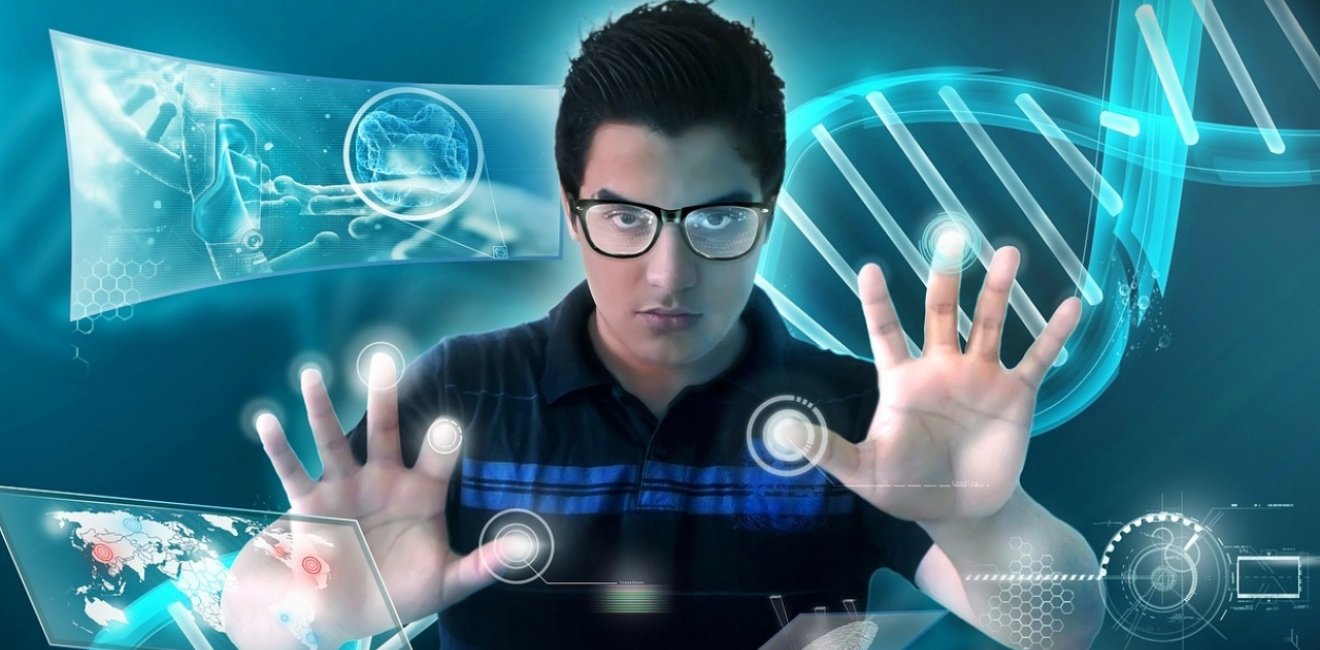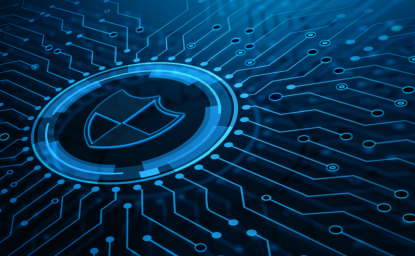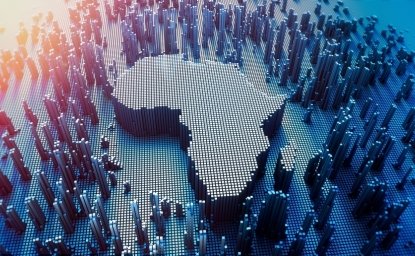
A blog of the Science and Technology Innovation Program
6 AM, Washington, DC – Erika wakes up and quickly checks her ”digital DNA avatar,” a digital version of her genetic blueprint as it evolves day by day. The avatar knows a lot about her as it constantly monitors the interactions between her genes, analyses her bodily fluids and diet, as well as integrates data about the air quality around her. Her avatar proposes a few advices about food choices and exercise patterns. Everything seems in check, nothing to be worried about. For now.
The United States has been precision medicine’s worldwide champion, conducting most of the research that first deciphered our genome about fifteen years ago. This could change with China’s heavy investment and capacity-building in the increasing convergence of artificial intelligence (AI) and new genetic technologies. This golden combination of AI and genomics data has the potential to drive precision medicine to new heights by helping unravel the mysteries of why our bodies react to different chemicals, viruses, and environments, thus recommending the best medicines and treatments. As China establishes itself as a real competitive force in precision medicine, the U.S. needs to anticipate and understand what this competition means in terms of ownership of medical innovation and personal data protection. Which nation will be the first to own and patent cancer diagnostics and therapeutics vital to our future? Can our science policy and diplomacy encourage U.S.-China collaborative research efforts? The stakes are also high in terms of biosecurity, as genetic and computing research is inherently dual-use and therefore a strategic piece in a nation’s security arsenal. While it will be crucial to leverage genomic data for future health, economic and biodefense capital, these data will also have to be well managed and protected. How do we foster, at a science policy level, a U.S.-China dialogue, involving norms and values, about personal data-sharing and protection? In life sciences and genomics, the answer will require creativity and anticipation with the goal of building collaborative practices instead of walls. Which political and economic incentives can help us make this commitment to collaboration a win-win game for both nations?
THE INNOVATION CONTEXT
In 2016, the Chinese government launched a $9 billion and 15-year effort that aims at turning China into a global leader in harnessing computing and AI technologies for interpreting genetic and health data. [i] This investment eclipses a similar precision medicine initiative by the Obama administration which started with a $215 million investment in the President’s 2016 Budget[ii] and might not be pursued by President Trump’s new administration. But this is more than a race in numbers. Working with companies in China and abroad, most of them in the U.S., Chinese investors and tech leaders are getting access to ever growing amounts of patients’ genetic data and developing the machine-learning tools needed to turn these data into sophisticated diagnostics and therapeutics. Liquid biopsies for diagnosing cancer, for instance, are predicted to become the next commercial gold rush in healthcare. By one estimate, the market is expected to be worth $40 billion in 2017.[iii] Increasingly, the U.S.-China relationship will not be defined by the ownership of 20th century manufacturing industries but by a race in genetic and computing innovation that will drive the economy of the future.
A Chinese Crystal Ball into Your Health
We are on the edge of a dramatic revolution in precision medicine, with the increasing convergence of new genetic technologies and artificial intelligence (AI). AI is a new field relying on super-computing platforms that can recognize relationships between different big-data sets.[iv] Imagine an artificial intelligent system powerful enough to predict your health status in real-time by running algorithms through your most intimate genetic, physiological, behavioral and lifestyle data. Founded by prodigy Jun Wang in 2015, the Shenzhen company iCarbonX is developing software that can learn to detect useful patterns between huge amounts of individuals’ biological, medical, behavioral and psychological data.[v] Such a data-ecosystem will connect the biology and experience of millions of individuals to understand how their genes interact and mutate, how diseases and aging manifest in their cells and bodies over time, how their everyday lifestyle choices affect morbidity, and how these personal susceptibilities play a role in a wide range of treatments. This ecosystem is not only handling personal data but also potentially vulnerable data as it uses a smartphone application, Meum, for customers to enter insights and consult health advices. iCarbonX has now raised more than US$600 million[vi] for its digital ecosystem, which might dwarf efforts by other U.S. Internet giants at the nexus of genomics and AI. According to CB insights, iCarbonX has a $1 billion valuation, making it one of the wealthiest healthcare start-ups in China.[vii]
Genomics and AI, Precision Medicine’s Next Holy Grail
With powerful backers, iCarbonX is the most emblematic start-up, but not the only one at the convergence of AI and genomics: an ever expanding network of IT and bio-computing companies is rapidly conquering the Chinese and U.S. health markets [Map]. The Consultant firm Frost & Sullivan predicts AI systems will generate $6.7 billion in global revenue from health care by 2021, compared with $633.8 million in 2014.[viii] AI systems are quickly invading the lab and the clinic to make sense of the increasing trove of genomic data – by 2025, between 100 million and 2 billion human genomes could be sequenced – an effort that will exceed the computing challenges of running YouTube and Twitter.[ix] One of the first questions in the public eye and in the investors’ business plan is: what kind of medical progress could genomics and AI achieve?
A Window into our Genome with Tailored Health Insights?
Despite our swiftly improving capacity to read, sequence and edit the information contained in the human genome, we still don’t understand most of the genome’s functions and how they impact our physiology and health; we still need to decipher the functions of innumerable genes and their mutated variants. Experts such as Jun Wang postulate that if you want to understand the relationship between genes and physiological traits, you need an AI system to identify those complex rules.[x] For example, the company Deep Genomics is analyzing genomic data using deep learning – the process by which a computer integrates a very large amount of data and then, based on its learning techniques drawn from analyzing other datasets, interprets that new information.[xi] Deep Genomics’ software programs are trying not only to build a map that decodes the functions of our genes, but also predict the effect of a genetic mutation on our overall genome. Another advantage AI systems could bring to clinical research is to process simultaneously huge amounts of genomic, physiological, health, environmental and lifestyle data, meaning these systems would read the content of our genomes, our smartphones and our medical records, and draw interferences about what they have learned.[xii][xiii] For example, the goal of a company like iCarbonX is to be able to study the evolution of our genome as we age and design personalized health predictions such as susceptibilities to diseases and tailored treatment options.[xiv][xv]
Liquid Biopsies, the Future of Preventive Medicine
Early detection of disease is crucial. In most cases, the earlier the disease is diagnosed, the more likely it will be cured or well controlled. However, diseases like cancer or Alzheimer’s can be hard to detect, hiding in our bodies before symptoms appear. Every case of cancer is unique since it is driven by personal occurrences of genetic mutations that can be present at birth or happen over time.[xvi] Truly early detection will come about when we identify the genetic markers responsible for cancer or detect cancer DNA in a simple blood test; this is the new hope behind “liquid biopsies,” blood tests that can detect cancer early – a new market heavily invested by genomic companies in China and the U.S.[xvii] Defining these genetic markers at personal and population levels with medical and statistical rigor will require machine-learning technologies to power comparative clinical studies of unprecedented scale.[xviii]
A Boon for Novel Cancer Therapeutics
The company Tempus will use its machine-learning technology to analyze thousands of patients’ cancer biopsies with the goal to better understand which genetic markers should be targeted in personalized cancer treatments.[xix] Mayo Clinic is collaborating with Tempus hoping to deliver more individualized cancer therapies. Other large scale companies like IBM and Pfizer are starting similar collaboration to accelerate drug discovery in immune-oncology.[xx] Two U.S. non-profit organizations – the Parker Institute for Cancer Immunotherapy in San Francisco and the Cancer Research Institute of New York City - are also betting on machine-learning tools: as reported in Nature, these two institutions recently supported a call for different U.S. laboratories to compete using their specific algorithms to “best predict a candidate for a personalized vaccine from a patient’s tumor DNA.”[xxi]
There is still pervasive uncertainty about how accurate deep machine-learning will be in drawing useful interferences between the different datasets that make our biology.[xxii] For instance, an AI system could identify a genetic mutation as being somewhat involved in the development of a disease but without being able to analyze the mutation’s particular role. And this form of uncertainty could vary across different populations. Yet, while we cannot know how well AI will master genetics’ uncertainty and complexity, considerable data sets might soon be fed, at increasing speed, to tech companies’ algorithms in the U.S. and China.[xxiii] Our biological and personal data are already deemed extremely valuable as the new coal, oil or shale gas to be fueling the medicine of the future.[xxiv] Where does that leave us?
OUR GENOMICS DATA IN THE CYBERSPACE
To achieve his precision medicine’s ambition, iCarbonX’s CEO Jun Wang is aiming to sequence 100 million genomes and collect other layers of biological data, a trove that would be updated by patients over time.[xxv] In January 2017, he announced having invested $100 million in PatientsLikeMe, a Cambridge, MA-based company, which is the biggest network of patients with chronic diseases (over 2,700 conditions) who share experiences and health information online.[xxvi] The two companies are now key actors in the Digital Life Alliance – a platform comprising today’s leading innovative AI and health tech companies.[xxvii] PatientsLikeMe is mainly composed of participants interested in personal and medical data-sharing and is therefore a good candidate for the new algorithmic business of health.[xxviii] But does social acceptance over personal data-sharing go beyond PatientsLikeMe? How much consideration has been given to privacy and the evolving notion of personal data in an AI powered health economy? And is our cyberinfrastructure ready to protect such trove of personal health data from hackers and industrial espionage?
Cyberespionage has already had impact, as in the recent hackings of health insurer Anthem[xxix] and of the Office of Personnel Management in 2015.[xxx] In 2016, many ransomware attacks also targeted U.S. hospitals[xxxi] in California, Kentucky and Washington D.C., where the giant MedStar Health[xxxii] had to shut down its IT system interfaces paralyzing crucial hospital activities. In a recent report,[xxxiii] the Food and Drug Administration warns[xxxiv] that cyberattacks now involve not only hospitals electronic databases but online medical devices and health applications used by patients.[xxxv] Beyond healthcare companies, it is now genomic sequencing companies that are hackers’ target: Quest Diagnostics – which uses IBM Watson’s Genomics platform – has been hacked in December 2016 and was robbed of 34,000 patients’ personal data.[xxxvi] The theft of our most sensitive genetic data could be exploited for insurance fraud or identity theft, or lead to a disturbing invasion of patient privacy. Furthermore, the collective threat posed by cyberattack on our biotechnological and biodefense infrastructures cannot be neglected.
Privacy and Personal Data Management
As deep genomics expands, important ethical and governance questions lurk in the background. How will the predictive health data be used and who will have access to it? Do pharmaceutical companies have the right to profit from your health information without giving you any benefits back in return, a la Facebook and its relationship to our social media data? Would it threaten your self-worth when those handling your health data know a lot of biological details about your body? How do you share the information with other people? Is it ethical for a prospective employer to ask how your health will look like in the next decade? Answers to these questions are not easy to capture but their impact on society is profound. A recent report[xxxvii] on ethics design and AI argues (p65) that “as computational power increases with time and AI improves, […] information that was thought private will be linked to individuals at later stage in time. Furthermore, as data is stored in terms of summaries rather than as raw observations, and may help training algorithms, keeping track of data usage and potential risks to privacy may be increasingly complex.”
Several voices in the research community have argued for a new model of personal data ecosystem where every individual would manage, share or trade its information while preserving a form of data-ownership and control. “The technological advances developed for digital currency systems, which allow individuals to hold and secure digital assets without a central authority, are being used to create new digital property systems, including personal medical data property.”[xxxviii] This constitutes an interesting reflection but should be accompanied by a broader analysis on how personal data ecosystems would fit in an AI-powered health economy. There is also an urgent need to concurrently discuss how the convergence of AI and personal health will challenge the purpose and content of relevant legislation such as the Health Insurance Portability and Accountability Act (HIPAA) and the Genetic Information Non-Discrimination Act (GINA).
Building Capacity in Cyber-Biology
Refining our models of genomic data protection is also a critical biosecurity issue. The insights underlying the functioning of our genomes and its impact on our health that will come from increasing convergence between genomics research and AI will be of strategic importance in biotechnology and biodefense.[xxxix] This knowledge may lead to more developments at the forefront of medical countermeasures such as vaccines, antibiotics, treatments relying on virology and microbiome research as well as applications in military and human enhancement. Interestingly, the nascent genomics and AI industry will rely on cloud computing for data- storage and exchange,[xl] creating new vulnerabilities associated with any internet-based technology in its wake, which raises questions: are we giving too much control to distributed complex systems in interpreting and exploiting our biological substrate? Will nation-states have to constantly accelerate their rate of bio-innovation to be more resilient? Those at the sharp end of genomics and AI research should start a conversation with diverse fields of expertise in biosafety, biosecurity and biotechnological governance.
A BIOLOGICAL RACE BETWEEN USA AND CHINA
The data protection and innovation challenges that come with the convergence of genomics and AI have to be analyzed in context: an intense race between the U.S. and China for precision medicine leadership.[xli] And China is getting really good at this game with increasing genomic sequencing and AI capacities, relentless effort to access valuable data, and large-scale public and private investments.[xlii]
China’s Rapid Expansion
The ecosystem made of numerous Chinese companies specialized in genomic sequencing, analysis and health analytics has grown inland and extended its reach to the U.S. The Shenzhen-based firm BGI is now opening an office on the U.S. West coast with the hope to benefit from Seattle’s biotech and health sciences environment.[xliii] Another company, WuXi NextCODE, which was an early investor in 23&Me – the popular direct-to-consumer genetic testing hub – now has a foot in the U.S. and in China, with an extensive library of genomes from both continents.[xliv] WuXi NextCODE is one of the largest genomic data platforms using machine-learning to better diagnose rare diseases and cancer as well as design tailored, improved therapeutics. A sharp blow in this U.S.-china competition happened in 2013 when BGI purchased Complete Genomics, in Mountain View California, with the intent to build its own advanced genomic sequencing machines, therefore acquiring a tech knowhow mainly mastered by U.S. producers.[xlv] The U.S. biggest supplier of DNA sequencing instruments, Illumina, shared its security and economic concerns with Washington, DC with the hope to stop BGI’s takeover.[xlvi] This online map shows respective – U.S. and China – capacities in genomics and AI and their related investments and partnerships.
Patents and Trade Secrets in Deep Genomics
There is obviously another, brighter way to look at the attached map. Undeniably, there is an increasing exchange of bio-medical know-how and data between U.S. and China. Yet, a powerful logic still governs precision medicine: ownership of innovation. Which company in which country will be first to patent the new liquid biopsies able to detect widespread cancers? Which company in which country will develop the next tailored cancer therapeutics based on the ability to silence a specific genetic function? Under which government’s regimes will deep genomic ecosystems flourish? Ownership of cutting-edge genetic technologies – with gene-editing as a perfect example – is at the center of a current patent fight in the U.S., representing considerable gains for the winning universities and related start-ups.[xlvii] A patent fight such as the one between the Broad Institute and the University of California Berkeley around gene-editing technology’s ownership might lessen incentives for early-true collaboration. Indeed, upstream knowledge-sharing and collaboration, even notebooks and postdoc assistants, play a crucial role in providing rival institutions with the insights to compete and obtain ownership.[xlviii] Interestingly, before being able to patent the processes behind new therapeutics or diagnostics, tech companies will need to protect their increasing knowledge of genomic functions. Companies will attempt to withhold this knowledge as trade secret,[xlix] therefore increasingly confronted with the urgency to fight cyber-espionage.[l] In this context, how will rivalries and competing dynamics play out between the U.S. and China?
RECOMMENDATIONS
As the U.S. is changing political leadership, there are a few recommendations to bear in mind about the governance of converging technologies in precision medicine:
- The U.S. Congress should commission a study on the depth of the cybersecurity problem in deep genomics, meaning at the convergence of genomics and AI. There is an urgent need to concurrently discuss how the convergence of AI, genomics and personal health will challenge the purpose and content of relevant legislation such as the Health Insurance Portability and Accountability Act (HIPAA) and the Genetic Information Non-Discrimination Act (GINA).
- Those at the sharp end of genomics and AI research should start a conversation with diverse fields of expertise in biosafety, biosecurity, ethics and biotechnological governance. Finding the right balance of protection and regulation will be important: too much regulation could endanger the U.S. precision medicine industry, leading to China gaining advantage in one more race. Too little regulation could leave this industry vulnerable to the perils of cyberspace, which has recently seen a Russian hacking into an electrical grid.[li] Setting specific standards of encryption for activities related to genome sequencing and storage, akin to higher levels of security for personal data might be the first step in finding the right balance of regulation, because we cannot afford to let an industry holding such valuable information and such powerful computational tools self-regulate.
- The U.S. government should explore how collaboration between U.S. and Chinese companies in the field of precision medicine could enable win-win outcomes for both sides. Should we adapt our ownership models and means of research collaboration for incentivizing sharing of genomic data and machine-learning know-how across the Pacific? Yet, such an effort has to involve a strong commitment to preserve safety, security and privacy and fight against misuse of data, genetic discrimination and stigma at individual and population levels.
- The message to the Trump administration is that there should not be a Cold War on technology between the U.S. and China. On the contrary, the Office of Science and Technology could instigate U.S.-China collaborative efforts to discuss key positive and negative insights, values, norms and governance models for the use of genomics and AI in precision medicine.
- On its end, the Wilson Center will develop a brain trust of interdisciplinary experts interested in precision medicine from different angles such as genomics, AI, data-sciences, intellectual property, ethics, sociology and governance with the mission to anticipate coming challenges and develop mitigation solutions. For example, researchers have argued for a new model of digital ownership system where every individual would manage, share or trade personal information while preserving a form of data-ownership and control.[lii] Here, the Wilson Center brain trust could lead a broader analysis on how personal data ecosystems would fit in an AI-powered health economy.
[i] Mui, Ylan. "China’S $9 Billion Effort to Beat the U.S. In Genetic Testing". Washington Post. N.p., 2017. Web. 27 Jan. 2017.
[ii] "FACT SHEET: President Obama’s Precision Medicine Initiative". whitehouse.gov. N.p., 2017. Web. 27 Jan. 2017.
[iii] Standaert, Michael. "Blood Test for Early Cancer Detection". MIT Technology Review. N.p., 2017. Web. 27 Jan. 2017.
[iv] "Will Artificial Intelligence Help to Crack Biology?". Economist.com. N.p., 2017. Web. 27 Jan. 2017.
[v] WIRE, BUSINESS. "iCarbonx Expands Digital Life Alliance to Accelerate Development of Global Health Ecosystem". Businesswire.com. N.p., 2017. Web. 27 Jan. 2017.
[vi] Cyranoski, David. "Chinese AI Company Plans to Mine Health Data Faster Than Rivals". Nature.com. N.p., 2017. Web. 27 Jan. 2017.
[vii] "The Complete List of Unicorn Companies". The Complete List of Unicorn Companies. N.p., 2017. Web. 27 Jan. 2017.
[viii] "Press Releases". Frost and Sullivan. N.p., 2017. Web. 27 Jan. 2017.
[ix] Check Hayden, Erika. "Genome Researchers Raise Alarm Over Big Data". Nature.com. N.p., 2017. Print.
[x] Cyranoski, David. "Exclusive: Genomics Pioneer Jun Wang On His New AI Venture". Nature.com. N.p., 2017. Print.
[xi] Loria, Kevin. "This Man Thinks He Can Crack One of the Greatest Mysteries About What Makes Us Sick". Business Insider. N.p., 2015. Web. 27 Jan. 2017.
[xii] McCarthy, Jack. "Stanford Researchers: Artificial Intelligence Is Ripe for Healthcare". Healthcare IT News. N.p., 2016. Web. 27 Jan. 2017.
[xiii] Allen, Kate. "How Artificial Intelligence Could Transform the Medical World | Toronto Star". thestar.com. N.p., 2017. Web. 27 Jan. 2017.
[xiv] Cyranoski, David. "Exclusive: Genomics Pioneer Jun Wang On His New AI Venture". Nature.com. N.p., 2017. Web. 27 Jan. 2017.
[xv] Khan, Natasha. "How to Predict Your Body's Health with A Digital DNA Avatar". Bloomberg.com. N.p., 2016. Web. 27 Jan. 2017.
[xvi] Herper, Matthew. "Company Will Raise $1 Billion to Create Blood Test to Detect Cancer". Forbes.com. N.p., 2017. Web. 27 Jan. 2017.
[xvii] Standaert, Michael. "Blood Test for Early Cancer Detection". MIT Technology Review. N.p., 2017. Web. 27 Jan. 2017.
[xviii] Herper, Matthew. "Company Will Raise $1 Billion to Create Blood Test to Detect Cancer". Forbes.com. N.p., 2017. Web. 27 Jan. 2017.
[xix] McCarthy, Jack. "Stanford Researchers: Artificial Intelligence Is Ripe for Healthcare". Healthcare IT News. N.p., 2016. Web. 27 Jan. 2017.
[xx] Japsen, Bruce. "Pfizer Partners with IBM Watson to Advance Cancer Drug Discovery". Forbes.com. N.p., 2016. Web. 27 Jan. 2017.
[xxi] Ledford, Heidi. "Algorithms Compete to Predict Recipe for Cancer Vaccine". Nature.com. N.p., 2017. Web. 27 Jan. 2017.
[xxii] Lowe, Derek. "Watson and Pfizer". In the Pipeline. N.p., 2016. Web. 27 Jan. 2017.
[xxiii] Cyranoski, David. "Chinese AI Company Plans to Mine Health Data Faster Than Rivals". Nature.com. N.p., 2017. Web. 27 Jan. 2017.
[xxiv] Thielman, Sam. "Your Private Medical Data Is for Sale – And It's Driving a Business Worth Billions". the Guardian. N.p., 2017. Web. 27 Jan. 2017.
[xxv] Cyranoski, David. "Exclusive: Genomics Pioneer Jun Wang On His New AI Venture". Nature.com. N.p., 2017. Print.
[xxvi] "Patientslikeme Partners with iCarbonx and Secures $100+ Million Investment | Patientslikeme". News.patientslikeme.com. N.p., 2017. Web. 27 Jan. 2017.
[xxvii] WIRE, BUSINESS. "iCarbonx Expands Digital Life Alliance to Accelerate Development of Global Health Ecosystem". Businesswire.com. N.p., 2017. Web. 27 Jan. 2017.
[xxviii] Engel, Jeff. "Patientslikeme Nabs $100M, Works to Advance Personalized Medicine | Xconomy". Xconomy. N.p., 2017. Web. 27 Jan. 2017.
[xxix] Mathews, Anna. "Anthem: Hacked Database Included 78.8 Million People". WSJ. N.p., 2015. Web. 27 Jan. 2017.
[xxx] "Arms Control in Cyberspace?". Wilson Center. N.p., 2017. Web. 27 Jan. 2017.
[xxxi] Leetaru, Kalev. "Hacking Hospitals and Holding Hostages: Cybersecurity in 2016". Forbes.com. N.p., 2016. Web. 27 Jan. 2017.
[xxxii] Turner, Karen, John Woodrow Cox, and Matt Zapotosky. "Virus Infects Medstar Health System’s Computers, Forcing an Online Shutdown". Washington Post. N.p., 2016. Web. 27 Jan. 2017.
[xxxiii] "Postmarket Management of Cybersecurity in Medical Devices". FDA.gov. N.p., 2016. Web. 27 Jan. 2017.
[xxxiv] Becker, Rachel. "New Cybersecurity Guidelines for Medical Devices Tackle Evolving Threats". The Verge. N.p., 2017. Web. 27 Jan. 2017.
[xxxv] "Medical Device Cyber-Safety Rules Issued by US Watchdog - BBC News". BBC News. N.p., 2016. Web. 27 Jan. 2017.
[xxxvi] Chokshi, Niraj. "Hack of Quest Diagnostics App Exposes Data of 34,000 Patients". Nytimes.com. N.p., 2016. Web. 27 Jan. 2017.
[xxxvii] "ETHICALLY ALIGNED DESIGN". IEEE Standards. N.p., 2017. Web. 27 Jan. 2017.
[xxxviii] Kish, Leonard J and Eric J Topol. "Unpatients—Why Patients Should Own Their Medical Data". Nature.com. N.p., 2016. Print.
[xxxix] Peril and Promise, Emerging Technologies and WMD, Emergence and Convergence Workshop Report, October 13-14, 2016, Center for the Study of Weapons of Mass Destruction, National Defense University
[xl] Fleishman, Glenn. "The Data Storage Demands of Genome Sequencing Will Be Enormous". MIT Technology Review. N.p., 2015. Web. 27 Jan. 2017.
[xli] Cyranoski, David. "CRISPR Gene-Editing Tested in A Person for The First Time". Nature.com. N.p., 2016. Print.
[xlii] Cyranoski, David. "China’s Bid to Be A DNA Superpower". Nature.com. N.p., 2016. Web. 27 Jan. 2017.
[xliii] "BGI | BGI Opens Seattle Office for North America Expansion". Bgi.com. N.p., 2016. Web. 27 Jan. 2017.
[xliv] Mui, Ylan. "China’S $9 Billion Effort to Beat the U.S. In Genetic Testing". Washington Post. N.p., 2017. Web. 27 Jan. 2017.
[xlv] Cyranoski, David. "China’s Bid to Be A DNA Superpower". Nature.com. N.p., 2016. Web. 27 Jan. 2017.
[xlvi] Larson, Christina. "Inside China’s Genome Factory". MIT Technology Review. N.p., 2013. Web. 27 Jan. 2017.
[xlvii] Regalado, Antonio. "The CRISPR Patent Fight Now Has Its Own Benedict Arnold". MIT Technology Review. N.p., 2016. Web. 27 Jan. 2017.
[xlviii] Regalado, Antonio. "Who Really Invented Genome Editing?". MIT Technology Review. N.p., 2015. Web. 27 Jan. 2017.
[xlix] Pauwels, Eleonore. "Our Genes, Their Secrets". Nytimes.com. N.p., 2013. Web. 27 Jan. 2017.
[l] Pauwels, Eleonore and Apratim Vidyarthi. "How Our Unhealthy Cybersecurity Infrastructure Is Hurting Biotechnology". Wilsoncenter.org. N.p., 2016. Web. 27 Jan. 2017.
[li] Eilperin, Juliet and Adam Entous. "Russian Operation Hacked a Vermont Utility, Showing Risk to U.S. Electrical Grid Security, Officials Say". Washington Post. N.p., 2016. Web. 27 Jan. 2017.
[lii] Kish, Leonard J and Eric J Topol. "Unpatients—Why Patients Should Own Their Medical Data". Nature.com. N.p., 2016. Print.
Author

Formerly European Commission, Directorate-General for Research and Technological Development, Directorate on Science, Economy and Society

Science and Technology Innovation Program
The Science and Technology Innovation Program (STIP) serves as the bridge between technologists, policymakers, industry, and global stakeholders. Read more





